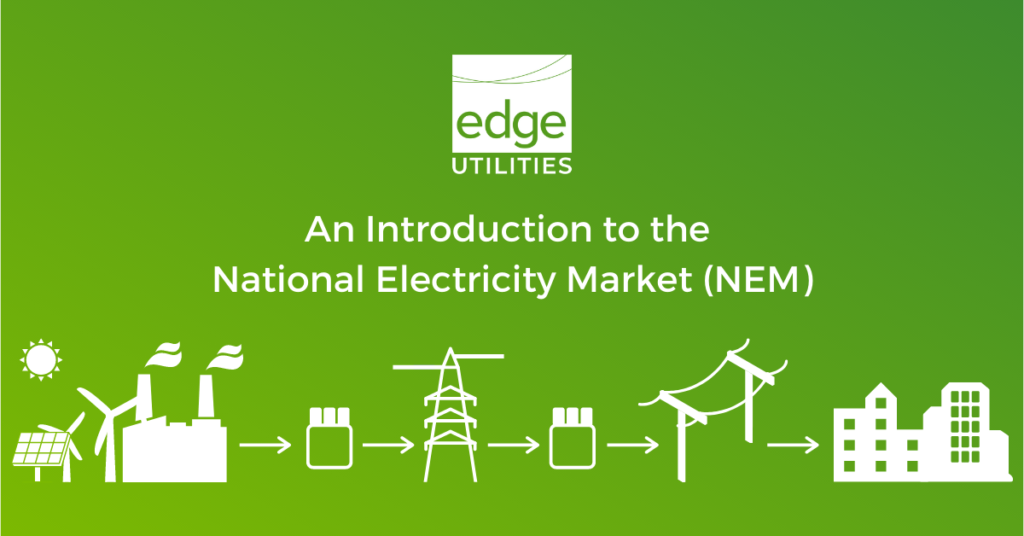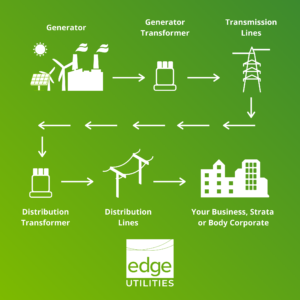The utilities market is complex and always changing, and it’s crucial for businesses, Strata and Body Corporates to understand their energy, gas and hot water contracts. We have an in-depth understanding of the needs and regulations in the management of Strata and Body Corporate operations and finance. We are ready to share our knowledge with you in order to maximise value on your utilities spends.
It is important to understand part of the process that goes behind producing the energy that is consumed by your business, Strata or Body Corporate. The National Electricity Market (NEM) operates on one of the world’s longest interconnected power systems. The NEM travels a distance of approximately 5,000kms across East Australia, stretching from Port Douglas, Queensland through to Port Lincoln, South Australia and across the Bass Straight to Tasmania.
The NEM incorporates around 40,000kms of transmission lines and cables, and supplies approximately 200 terawatt hours of electricity to businesses and households each year.
When you switch on your computer at work, power is instantly transmitted from a power station to the appliance. We may think that this is an easy process, however there is a lot more to it.
To ensure that the electricity required is delivered to consumers, there is a specific sequence of events that needs to take place first.
Generators
Electricity is produced by the conversion of energy found in resources such as coal, natural gas, oil, solar and wind. Generators in modern power stations produce electricity by the mechanical action of large, powerful magnets, that spin rapidly inside the huge coils of conducting wire driven by steam, gas, water, and wind turbines.
Generator Transformers
Convert electricity that has been produced at a generating unit from low to high voltage (up to 500 kV). This process enables efficient transport of the electricity to the transmission network.
Transmission Lines
High voltage currents leave the generator transformer and travel along the transmission network. The transmission network acts as a bulk transporter of electricity through a series of high voltage power lines. These lines stretch great distances across the east of Australia.
Distribution Transformer
Receives high transmission voltage and reduces it to a lower voltage, that can soon be distributed to consumers. Once this process is complete, the electricity transfers over to the distribution network.
Distribution Lines
After leaving the transformer, electricity will travel along the distribution lines and into a distribution substation. Here, high distribution voltage is again reduced to a lower voltage. The new lower voltage electricity is now suitable to be distributed to local lines such as the power lines we see on our streets.
Consumption
Once the above sequence is complete, we can turn on our computer and get on with our day.
For more articles from Edge Utilities, visit our news page: https://edgeutilities.com.au/news/
To connect with us, follow our page on LinkedIn: https://www.linkedin.com/company/edge-utilities/


